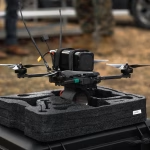
Technologies that will fundamentally change the nature of war are already under development and finding application in the commercial world, but the Army is stuck fighting with the equipment it has for at least another decade, according to the service’s top officer.Chief of Staff Gen. Mark Milley has made readiness a top priority of his tenure as the Army’s most senior uniformed official. An essential part of building a ready ground force is manning units to their optimal strength and…

 By
By 











